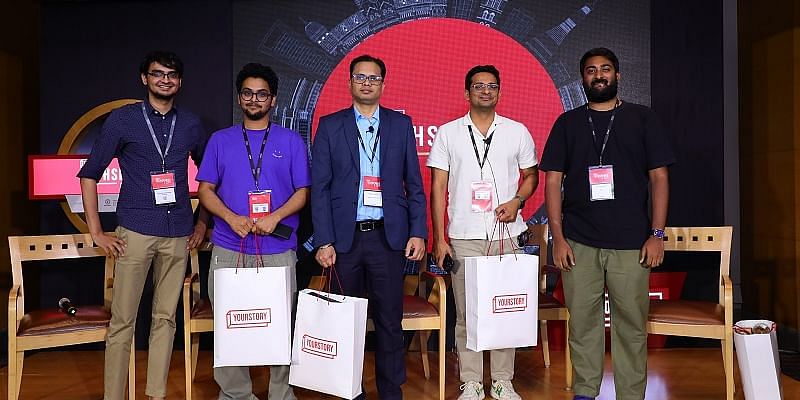The metaverse, a single, shared, and immersive 3D virtual space where humans can experience life in ways they could not in the physical world, is said to be the inexorable evolution of the internet.
However, despite the enthusiasm for the metaverse, there has been deep uncertainty about how it will pan out when it comes to infrastructure and scalability.
At a recent panel discussion at TechSparks 2023 Mumbai edition, industry experts discussed bringing Web3 technology to larger segments of the internet and spoke about how a Web3-powered metaverse can be used to its full potential.
The experts at the discussion included Mairu Gupta, Chief Business Officer, Trace Network Labs; Sharat Chandra, Co-Founder, India Blockchain Forum; Anil Dukkipatty, Co-founder and CTO, Revise; and Amartya Hari Pilaka, Senior Growth Lead, Mantle Network.
Interoperable environments in the metaverse and NFTs
Mairu Gupta, of Trace Network Labs, a platform that facilitates cross-chain lifestyle management for metaverses, said the metaverse already exists, with about 250 million monthly active users spending substantial amounts of time and money there.
Concerns may have risen after Meta’s recent decision to scale back on some projects, but the metaverse is alive and ticking, and will remain so in the future.
Amartya Hari Pilaka, of Mantle Network, believes the ultimate vision of the metaverse is the creation of an interoperable environment in which users can move through different experiences while maintaining their payments, contacts, and identities.
The past year has also seen an explosion in the popularity of Non-fungible tokens (NFTs), assets that have been tokenised via a blockchain. They are assigned unique identification codes and metadata to distinguish them from other tokens, and can be traded and exchanged for money, cryptocurrencies, or other NFTs.
Anil Dukkipatty of Revise, an open-source data management layer for NFTs, said NFTs are more than just links to images. “NFTs represent assets with an identity attached to them. Although they are static at present, everything changes over time in the real world,” he said.
Revise is developing a platform that can serve a number of applications in the metaverse to enable dynamic NFTs. A user could, for instance, pre-sell billboards as NFTs, which would change the advertisement based on footfall or the profile of the individual logging in.
The metaverse and NFTs may still be in their early stages, but the potential is huge.
Chandra, educator, speaker, blockchain technology evangelist, and industry pioneer, pointed out that companies like Revise are already exploring interesting possibilities on the metaverse side, and it will be “exciting to see how the space develops”.
Understanding Web2.5
The world went from Web1 to Web2, and we are now at the next frontier, Web3, with Web 2.5 serving as a bridge. But what exactly is Web2.5? Decentralised technologies and the user interface of Web2 are integrated into Web 2.5 to facilitate a seamless transition to Web3.
Web2.5 essentially represents the best of both worlds: the decentralised, trustless nature of Web3 and the user-friendly, intuitive interface of Web 2.
Dukkipatty views Web2.5 as a means of easing the onboarding process and the entry point for users. Using a decentralised wallet to recover passwords, for instance, is a step in the right direction.
In Gupta’s opinion, Web2.5 combines the familiarity of Web2 with the decentralisation of Web 3.0. Metaverse is an example, where users can sign in with Google and enter without having to set up complicated wallets, he said.
In Chandra’s view, Web2.5 serves as a bridge between the Web2 and the Web3 worlds. He cited Amazon’s use of AWS to launch marketplaces on a serverless platform.
According to Pilaka, the answer can be divided into three parts: the current state, where we need to be, and existing categories. “Web2.5 is an abstraction of the whole experience for novice users, allowing them to do cool things like mint NFTs without having to go through complicated setup procedures,” he said.
As a stepping stone towards Web3, Web2.5 is a crucial phase in the evolution of the internet. This bridge, which facilitates the transition for users and enterprises alike, will become increasingly important as more startups and enterprises explore cryptocurrency, DeFi, and Web3 gaming applications.
It’s clear that Web2.5 is poised to play a significant role in shaping the future of the internet.
Blockchain and programmable NFTs
All four experts discussed using blockchain technology and programmable NFTs for identity and credentialing.
Chandra suggested a single wallet for users to prove their credentials and make payments in Web3 commerce, adding that banks should leverage blockchain technology.
Dukkipatty and Chandra agreed that non-transferable soul-bound tokens can be used for identity and credentialing within an ecosystem. Dynamic badges could be used to allocate badges based on performance, especially in DeFi and NFTs.
The discussion also veered to how programmable NFTs might enable proof of personhood and humanity in the virtual world and metaverse.
Dukkipatty said identities and credentials function similarly in the real world, and soul-bound tokens could provide a solution to this issue in the blockchain realm.
Gupta suggested that AI-powered assistants can assist customers in finding what they are looking for in physical retail settings. In his view, a fashion meter can be useful in helping users locate the right dress for a particular occasion, if they search across multiple stores.
The discussion ended with one certainty: these technologies have the potential to revolutionise the way we interact with the world and facilitate the transition to the Web3 era.





![Read more about the article [Funding alert] Cold-chain startup Celcius raises seed round from Eaglewings Ventures, others](https://blog.digitalsevaa.com/wp-content/uploads/2021/05/Imageg2mr-1620736979578-300x150.jpg)
![Read more about the article [Funding alert] Khatabook raises $100M Series C funding round, announces ESOP buyback worth $10M](https://blog.digitalsevaa.com/wp-content/uploads/2021/08/khatabookteampicture21569840696854jpg-300x150.jpeg)


![Read more about the article [Funding alert] Software solutions provider Nirmata raises $4M in pre-Series A led by Z5 Capital](https://blog.digitalsevaa.com/wp-content/uploads/2021/08/funding12-16232299310311-1628685403744-300x150.png)

